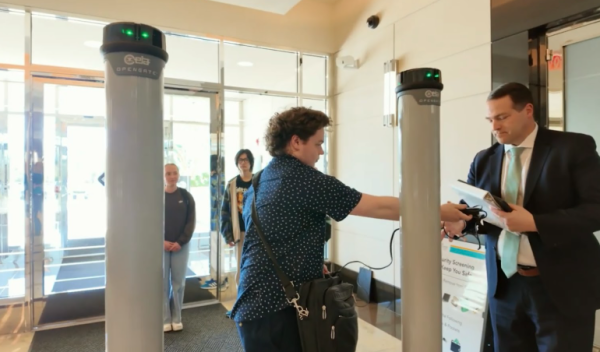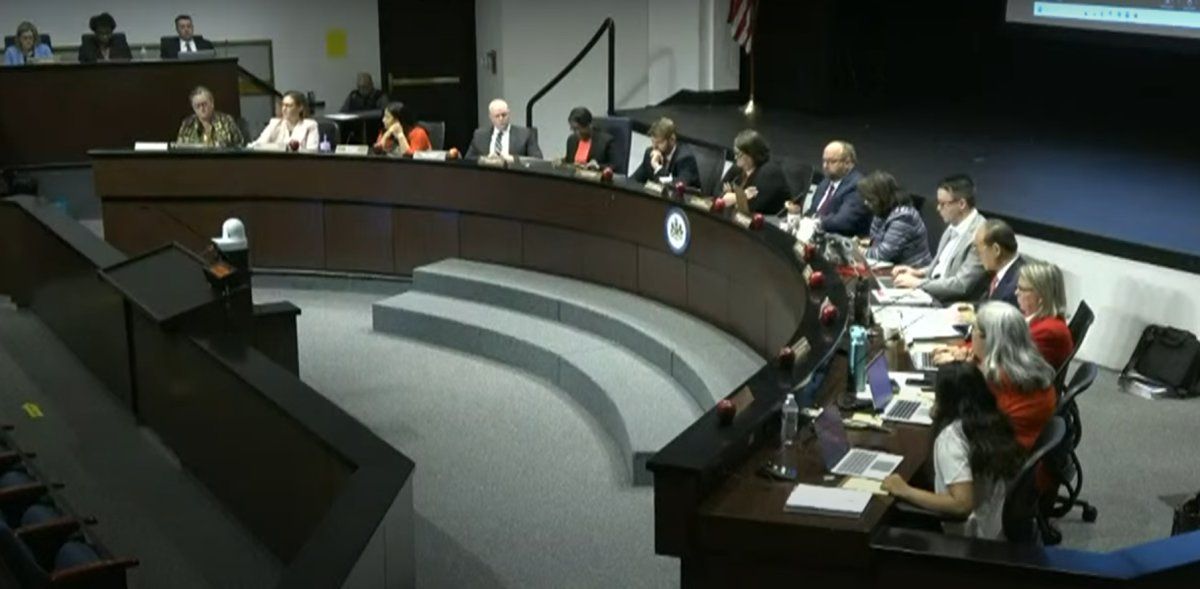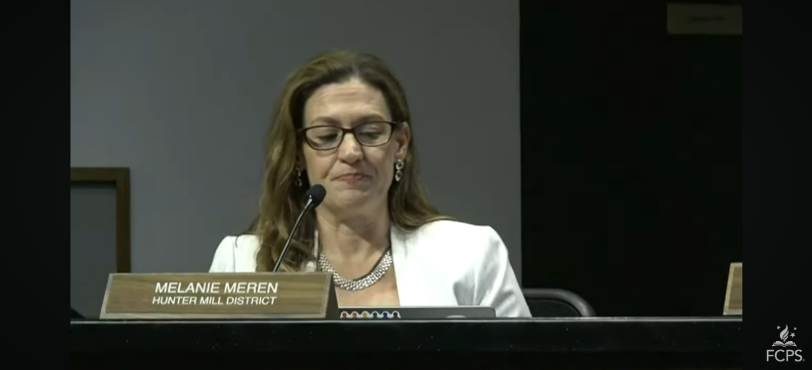There have been 86 school shooting events so far in 2025 alone according to the K-12 School Shooting Database. While the tally grows, so does concern regarding school safety, and FCPS has launched a weapon detection pilot in response.
OPENGATE is a metal detection system that consists of two towers through which individuals walk to be scanned. It features adjustable sensitivity settings that operators may calibrate to flag something as small as a zipper, or set to minimize alerts almost entirely. FCPS owns fifteen sets of two towers and allows entry through three to four doors by students when the screening is in place.
“The goal is to move as many students through as possible and that’s really what OPENGATE was designed for,” FCPS chief safety and security officer Brian Lambert said. “One of our challenges in a K-12 environment is we have a very limited amount of time to get students into school. We’re really trying to build our metrics around getting that student population within 30 minutes.”

FCPS refers to OPENGATE as a “weapons detection system,” and not a “metal detector” like the product’s creator does on its website. According to Lambert, this distinction stems from the district’s utilization of the tool: safety and security isn’t looking for coins in students’ pockets, but weapons of mass casualty like firearms.
Criminal justice teacher Phil Leger expects the pilot will not only serve to detect weapons, but that its existence will likely deter students from bringing such things to school in the first place. With fifteen OPENGATE systems, FCPS can only conduct screenings on one campus each morning and has elected not to issue prior notice to affected communities, but the randomized nature of the pilot might pose an additional layer of deterrence.
“It’s the same kind of idea as when police officers do traffic stops,” Leger said. ”If you put a bunch of cruisers on a certain road and you’ve seen them there once or twice and that’s typically a road that you speed on, you might be a little bit more hesitant to do it next time. The same kind of idea can be said for this situation, where if there’s been metal detectors in the school once or twice, it might be a future deterrent.”
Thomas Jefferson High School for Science and Technology senior Alexander Mather harbors concerns about the precedent the pilot sets for the student experience in FCPS and the overall efficacy of OPENGATE.
“Students are panicking, afraid of being treated like a suspect for the crime of potentially being a victim of school violence, and critically, my peers and I don’t believe that the OPENGATE system is capable of keeping our schools safe,” Mather said at an April 24 school board meeting. “On their website, they give almost no information on how their system works, saying that if they did, these criminals would be able to easily break it. In other words, OPENGATE is a mystery machine that we are expected to simply believe and if we knew how it worked, it would fail.”
Lambert’s office considered another detection system in addition to OPENGATE: Evolve. Both systems feature two towers to walk between, but they differ in three critical ways.
FCPS can purchase an OPENGATE detection system outright, while Evolve is only available for lease. Additionally, the OPENGATE detectors are built for portability, which lends itself to the nature of the district’s pilot. Lastly, the Evolve system features an iPad which indicates where on a person’s body it detects something of concern, contrasting with the ‘red light green light’ system of OPENGATE.
“Evolve might tell you where to focus your alert; that’s a positive, [but] there’s also some downsides to that,” Lambert said. “You’re looking at an iPad and one of the things that’s important to me is I want people watching people’s behavior. There can be a tendency to look at a screen, but my preference is that the person operating the gate is watching the person coming through.”
Lambert defines the pilot as a learning opportunity. He says the community should not yet perceive the weapons detection screening as a stress-tested solution to school safety concerns; it remains rather experimental.
“When we’re talking about safety and security in the schools, I think that it’s a good step,” Leger said. “I think it’s good for immediate threats; it’s a good way to provide an instant alert to a potential problem. It allows for a quick response; I think it’s a good deterrent for people to not bring weapons to school. Yeah, it adds a little bit more in the mornings, it could slow things down, it could make people a little bit anxious, but I think that the security aspect outweighs the cons to it.”








